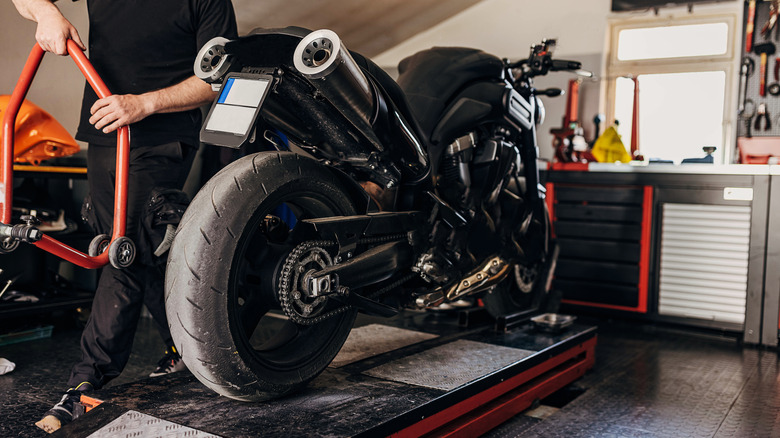Why Do Some People Raise The Rear Ride Height On Their Motorcycle?
For motorcycle riders, ride height adjustment is one of the most dramatic performance customizations they can do. Seen most often on high-end or performance motorcycles (but starting to make appearances on hobbyists' bikes as well), this change lets riders upgrade their motorcycle's suspension, raising or lowering its overall height. This change is usually made through the shock absorber or front fork by slightly altering their length or mounting distance. In turn, this changes the seat height, the handlebar height, and even the motorcycle's overall geometry.
All it takes is a few millimeters of adjustment to significantly shift the bike's handling. Specifically, raising the rear suspension shortens the wheelbase and sharpens steering to improve the bike's agility. However, this move also compromises braking stability and can even cause oversteer. On the other hand, lowering the rear shock increases the caster angle and trail. This stabilizes the bike at high speeds and improves braking performance, but also makes steering heavier and still potentially leads to understeer.
What happens when you adjust a motorcycle's ride height?
Even if you have a Harley-Davidson with Air Ride suspension, raising the ride height of your motorcycle is not something to treat lightly. Beyond the performance factor, tweaking either the front or rear end also changes weight distribution, ground clearance, and cornering behavior. If you're thinking about raising the rear ride height of your bike, you should always do so with small adjustments made incrementally. Every time you make a slight change, be sure to evaluate the bike's new handling before continuing any further. As with any suspension change, there is going to be a natural trade-off — the key is finding the right balance for your riding style and riding needs.
At the heart of every suspension system, there's a spring to absorb energy and a damper to control how that energy is released. Whether you're working with a stock shock or a premium aftermarket one, understanding and adjusting these two elements — rather than blindly replacing parts — is going to give you the best performance-to-cost ratio. Don't forget about sag (how much the suspension compresses under the weight of the bike and rider). Adjusting your bike's height will also impact sag.
Potential side effects of raising a motorcycle's rear ride height
Remember: Changing your bike's geometry will have side effects. Naturally, altering ride height is also going to affect ground clearance, lean angle, and even how the swingarm behaves under load. A lowered bike may scrape parts sooner in corners, while a raised one may feel twitchy under braking. That's why any change in ride height should also come with any necessary adjustments of sag, damping, and gearing or swingarm configuration.
In the end, raising or lowering your ride height should never be treated as a one-and-done adjustment. It's a dynamic process that will change along with your riding style, payload, and road or track conditions. Whether you're looking for more comfort on long commutes, better grip in corners, or sharper steering response, it's important to know how these small changes to ride height and suspension settings will affect your bike's behavior in the long haul.


